Feed the Bunny Alphabet Game
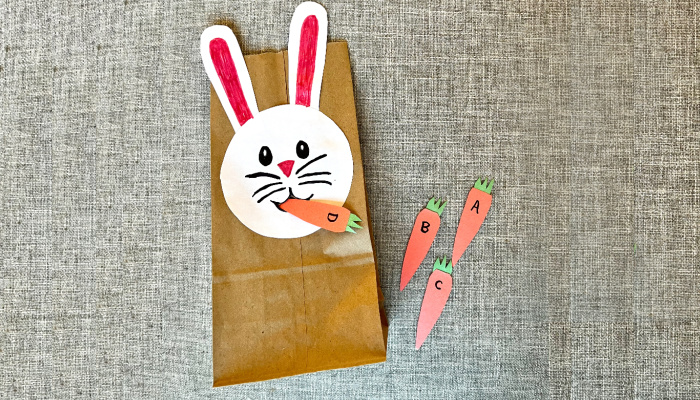
This post may contain affiliate links; please see our terms of use for details.
Alphabet letters are the building blocks of reading. It’s no wonder young children are taught their ABCs as one of their first songs. Without knowledge of the alphabet, reading isn’t possible.
Parents can give their children a headstart on reading by teaching them about the individual letters and the sounds they make. If a child learns letters and sounds before kindergarten, becoming a strong reader will be easier. You can teach your child their letters without using worksheets or drilling flashcards.
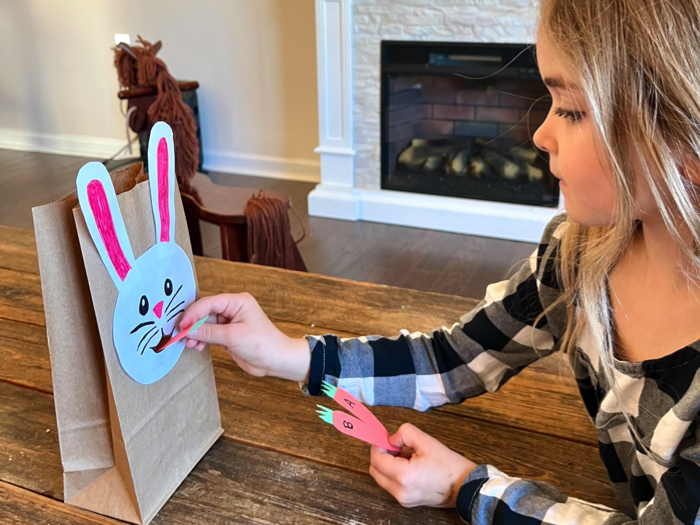
As a former kindergarten and first-grade teacher, I know the advantages of creating engaging preschool literacy activities. Fun literacy activities will keep your child from getting bored or frustrated. When you start making simple education games using minimal supplies, you’ll realize how easy it is to make learning fun.
With Easter right around the corner, I decided to create an alphabet game featuring one of our favorite Easter animals: a bunny. This adorable bunny is hungry and ready to be fed an alphabet of carrots.
If you have a little one working on letter recognition and sounds, this Feed the Bunny Alphabet Game is perfect. You’ll only need a few craft supplies and a lunch bag to get started!
Feed the Bunny Alphabet Game: What You’ll Need
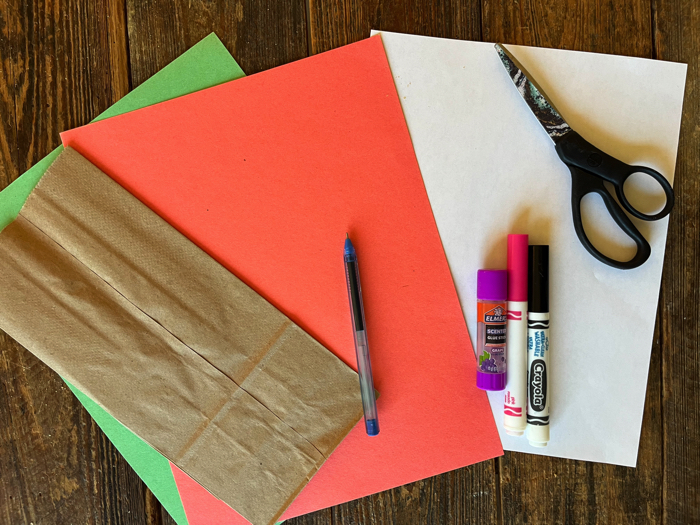
Take a peek in your kitchen pantry or drawers for a paper lunch bag. Once you find it, you’re already halfway to creating this simple game. All other items can be found in your craft or school supplies.
Here’s what you’ll need to make this Feed the Bunny Alphabet Game:
Materials:
- Paper lunch bags
- Construction paper
- Markers
- Glue
- Scissors
Setup:
In about 20 minutes, you can assemble this entire game and have it ready for play. Here are the steps for quick assembly:
Step 1: Using an empty, round container, trace a circle on a white piece of paper. Tracing a container will help ensure the circle is round and save you time. Be sure the circle is small enough to fit on the paper bag.
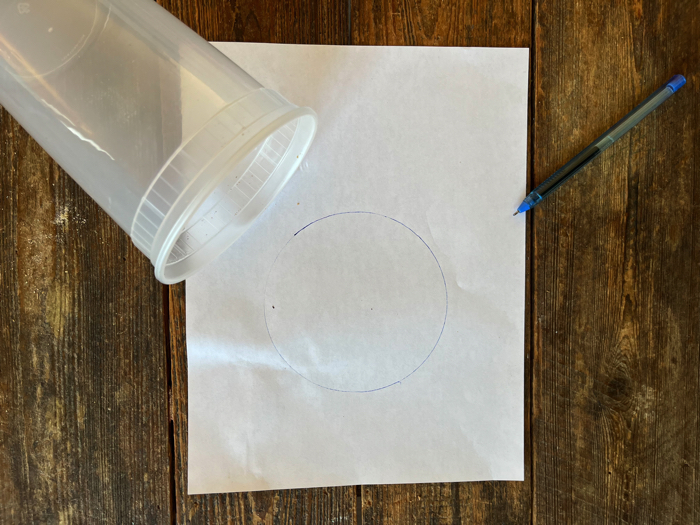
Cut out the circle.
Step 2: Take a piece of white scrap paper and fold it in half. Draw one long ear shape. A rabbit ear has an arch at the top and comes down to a squared-off bottom.
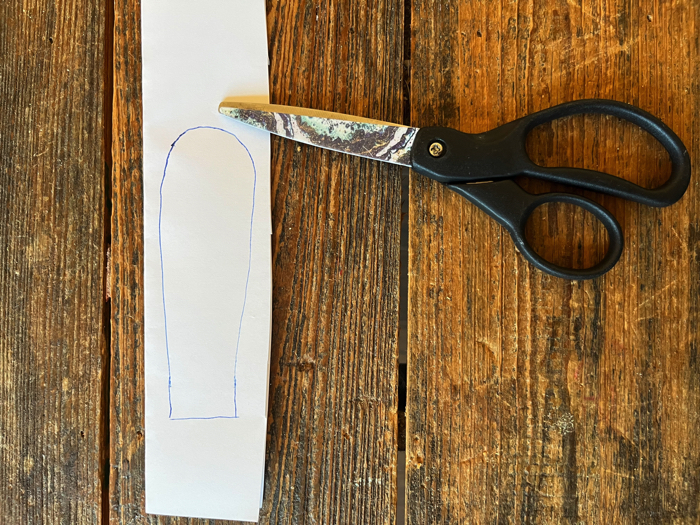
You’ll cut this shape out with the paper folded. When you do this, it creates two symmetrical ears. This is my shortcut to making multiple cuts at once.
Glue the bottom of the ears on the back of the circle.
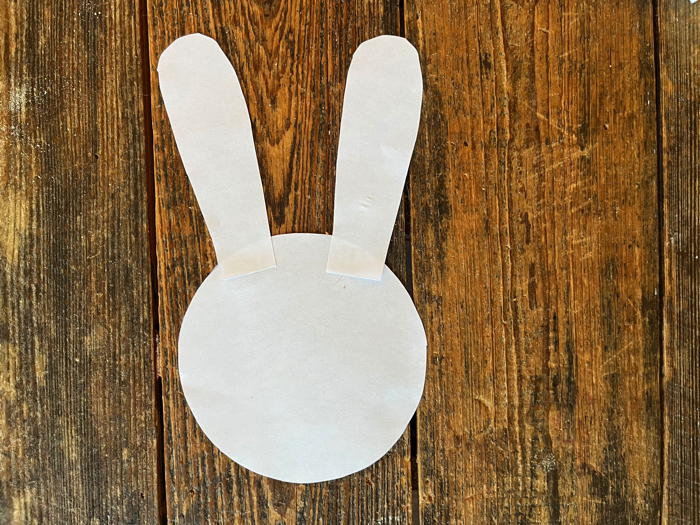
Step 3: Flip the circle to the front and draw on the facial details. I created a simple face using pink for the inner ears, pink for the triangle nose, and black for the whiskers, mouth, and eyes.
If you aren’t an artist, that’s okay. I try to think in terms of shapes to simplify a task like this. Ovals, triangles, curves, or fish hooks are much easier to draw than an entire bunny face.
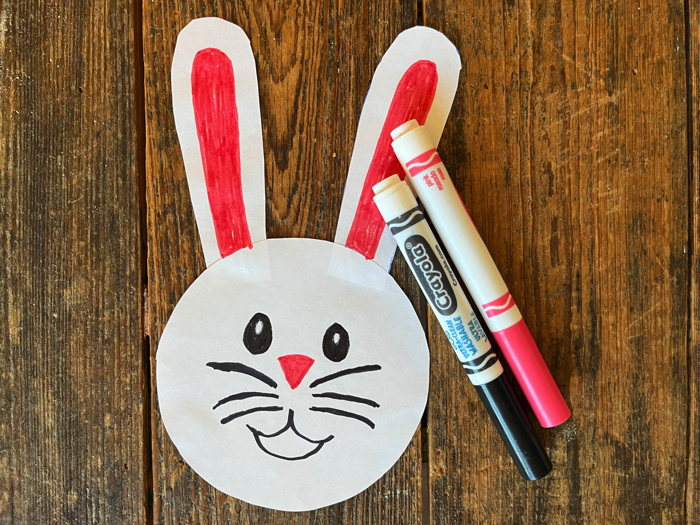
Step 4: Cut out the mouth of the bunny. This is where the carrots will enter the bag. Try poking a small hole in the mouth with a pencil so you have a place to start the scissors.
Step 5: Place the bunny on the bag. Trace the mouth hole and cut it out.
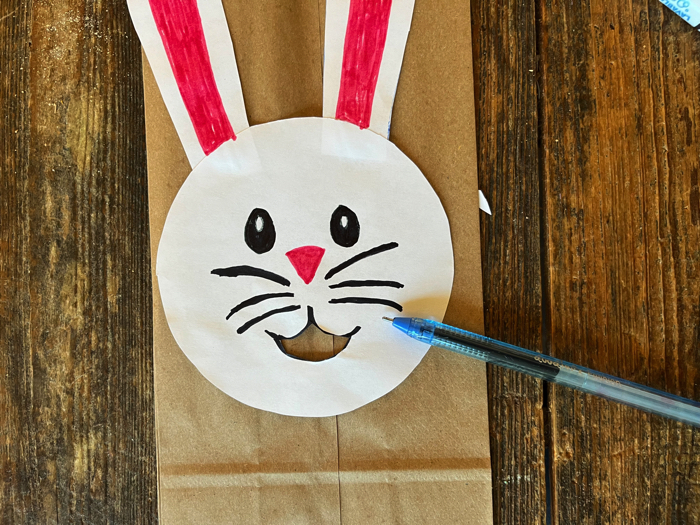
To make this cut, you’ll want to open the bag to separate the two layers. Only cut through one layer of the bag. Try poking a hole with a pencil first and then inserting scissors to complete the cut.
Step 6: Glue the bunny face on the paper bag while matching up the mouth holes.
Step 7: Draw a small carrot shape on an orange piece of construction paper. To make this step significantly faster, layer several pieces of paper at once. Cut through all the layers to create multiple carrots.
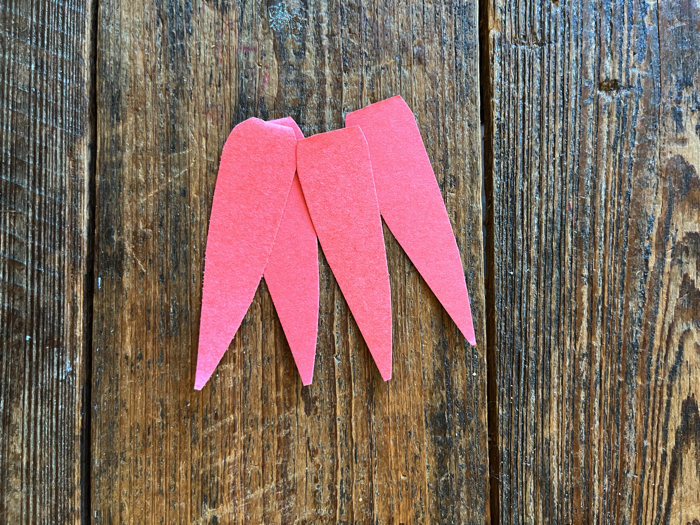
Step 8: Cut green stems using the same cutting method as the carrots. Glue the stems on the tops. (This step is optional, but the green stems do make the carrots cuter.)
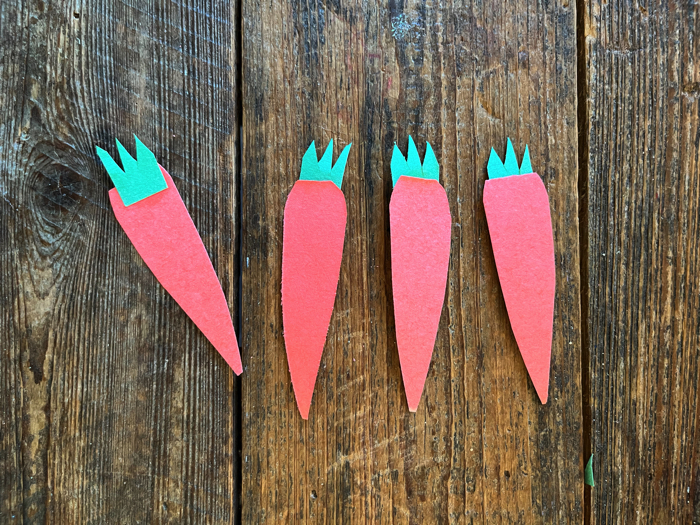
Step 9: Write the letters of the alphabet on the carrots. Consider whether you’ll want to focus on uppercase or lowercase. I chose to focus on uppercase this time since our last activity, Tactile Alphabet Cookies, focused on lowercase letters.
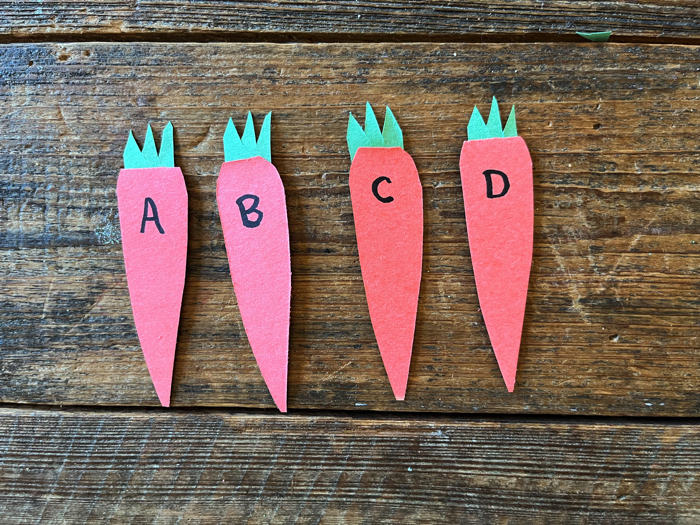
Time to Play
Now it’s time for the fun part. We used this Feed the Bunny game to cover several skills. Here are our favorite ways to play:
Letter Recognition
My three-year-old is just beginning to learn her letters. So for her, I used the game to practice matching letter names to the written letter.
To play this way, lay all the carrots on the table right-side up. Call out a letter name and have your child find it. You might say something like, “The bunny is hungry for letter C.”
Your child will look for the letter and slide the carrot into the bunny’s mouth. If your child is overwhelmed by the amount of carrots on the table, consider removing all but a few carrots. This will help them focus on just a few letters at a time.
Letter Sounds
If your child already knows their letter names, you can challenge them by switching to a letter sound game. To play this way, place all carrots face up on the table. Call out a letter sound for your child to find.
Depending on your child’s skill level, you may want to provide extra clues. For example, you might say, “The bunny is hungry for /s/ /s/ /s/ like snake.” Your child will then hunt for letter s.
After they find the correct carrot, they’ll slide it into the bunny’s mouth. For an extra challenge, have them name a food that begins with that letter and connect it with the carrot, such as “carrot soup” for s or “carrot donut” for d.
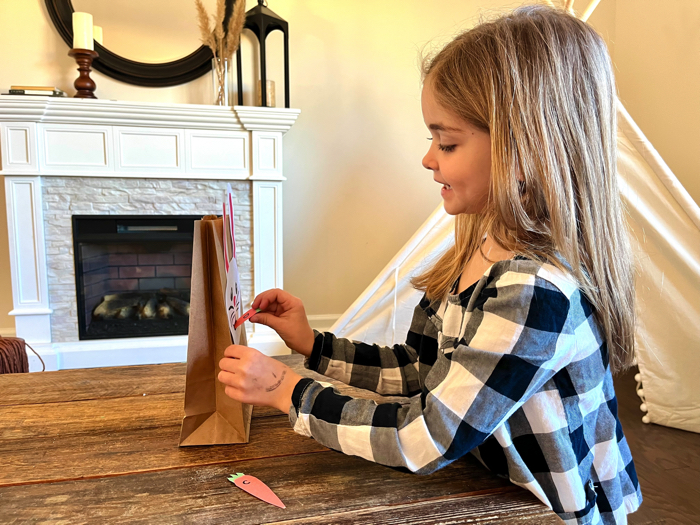
Word Building
My six-year-old loves building CVC words, even if they don’t make sense. We’ll often play simple games like CVC Word Snowball Toss to try to create as many words as we can. With this set of alphabet carrots, we were able to create a long list of words.
To play a word-building game with the bunny bag, place all carrots face up on the table. Call out a CVC word for your child to make, such as bat. Your child will hunt for the letters and feed them, one by one, into the bunny’s mouth.
As your child feeds the carrots into the bunny’s mouth, have them make each letter sound. This will help them blend the sounds to create the word.
Another way to play is to let your child call out their own word and find the letters to spell it.
What other ways can I use this Feed the Bunny Alphabet Game?
Once you have the bunny bag created, you can play with different sets of carrots to change the game. I love learning games with multiple uses, like our Sight Word Easter Egg Hunt.
Here are a few ideas:
Feed the Bunny Number Game
To practice number recognition, make a set of carrots featuring numbers 1-20. You can play this game by calling out a number and having your child find the correct carrot. Once they find it, they’ll slide it in the bunny’s mouth.
To practice number order and counting skills, have them feed the carrots into the bunny’s mouth in the correct order. Simple preschool math activities such as this one will prepare your child for kindergarten.
Feed the Bunny Vocabulary Game
Creating vocabulary games out of items you already have is one of the best ways to sneak in extra practice. To use this game for vocabulary practice, cut out small pictures of everyday items and glue them on the carrots. Items like a toothbrush, cup, apple, etc. are great for younger children and those at the beginning stages of vocabulary development.
As your child selects carrots to feed the bunny, have them name the object in the picture. To challenge older students, ask them to describe the picture using full sentences. For example, they might say, “I’m feeding the bunny a round, purple bowl.”
Color Recognition
Playing games like our Mushroom Color Sorting Activity is my favorite way to teach color names. Using a marker or circle stickers in different colors, mark each carrot with a color. You can even write the color word next to it for early sight word practice.
As your child feeds the bunny, have them name the color. Help them identify other objects that are the same color to reinforce the concept. For example, you might say, “Great job! That’s blue. What is something round and sweet that is also the color blue?”
What other ways can I teach letter recognition?
Letter recognition can be taught virtually anywhere there are written words. Utilize trips to the grocery store to point out letters on the packages you add to the cart. While in the car, have your child hunt for letters on signs and license plates.
While at home, use playdough to create letters. Playdough is a fantastic tool for creating fine motor activities for preschoolers that reinforce skills like this. You can also use a salt tray to help your child learn how to write letters.
What other ways can I enrich this activity?
- Henkes, Kevin (Author)
- English (Publication Language)
- 34 Pages – 01/28/2014 (Publication Date) – Greenwillow Books (Publisher)
If your child enjoys this activity, they might also enjoy these Easter-themed extensions:
- Have some fun with these glowing easter egg activities
- Get creative with these tactile easter crafts
- Read Little White Rabbit by Kevin Henkes
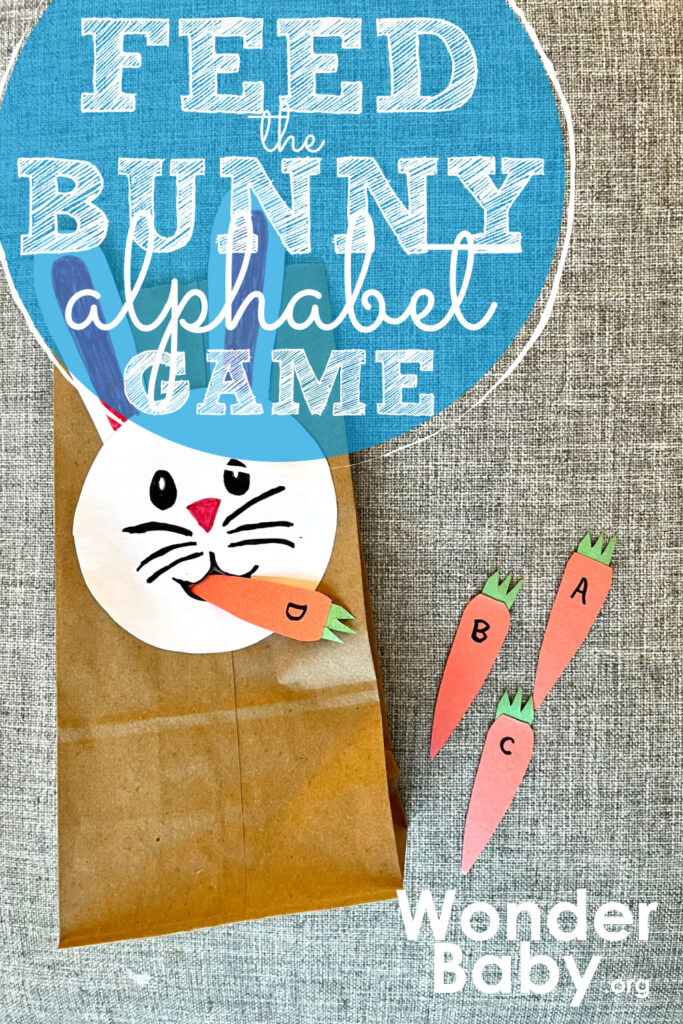
Related Posts
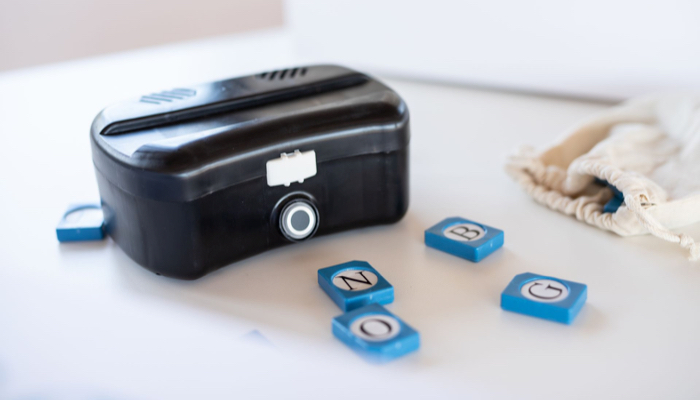
Braille and Literacy
Making Braille Fun: Introducing Handi Exceller’s Innovative Learning Tools for Blind Students
Handi Exceller was born from a simple idea: learning braille should be both fun and accessible. The company creates interactive and gamified ways to teach braille.

Braille and Literacy, Toys, Visual Impairment
24 Braille Toys for Kids Who are Blind
Everything from alphabet blocks to raised line coloring pages and activity books to puzzles to card and board games... and so much more! And it's all in braille ready for...
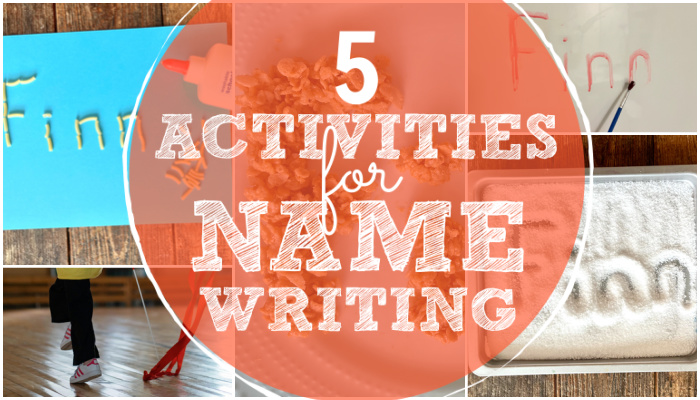
Braille and Literacy
5 Activities for Name-Writing
Learning to write your name is an important preschool skill. Make the task fun with one of these 5 activities for name-writing!
